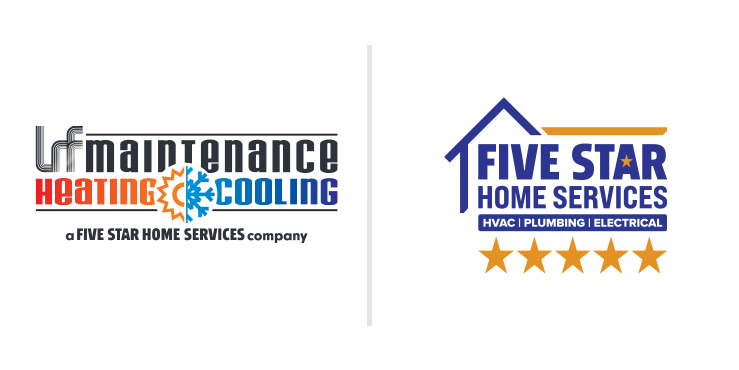A good quality, well installed, HVAC system should last 25 or more years if properly maintained. The key to a lasting HVAC system is preventative and predictive maintenance. All mechanicals need regular maintenance. Take your car for example. You change the oil and filter as part of a preventative maintenance and you change the tires as part of a predictive program. Preventative maintenance does not take the place of predictive maintenance. Preventative maintenance keeps things working longer, but all things will eventually fail. Preventative maintenance directly affects when the failure occurs. The tire example above provides a little insight to the preventative realm of maintenance. In this case you know about how long the tires should last, how many miles they are warrantied if the preventative maintenance, balancing and alignment is done. You can also see the wear. So you replace them long before they are bald. By managing the prediction, you don’t end up stranded at the worst possible time!
You can do the same thing with your HVAC system by researching failures on the web or consulting a reputable service company. Many parts of an HVAC system can and should be replaced before complete failure.
Now let’s consider the one thing that contributes most to any mechanical failure! HEAT!! But one might say I need heat in my furnace so I can keep warm. It’s hard to argue with that, but you need to make sure the heat is distributed to where you live and play, not in the equipment itself. Let’s look at a furnace and how the heat is generated and distributed. First consider that all manufactures test their products for a predetermined length of time. Lesser quality units will typically have shorter life expectancies. The point here is manufactures want to have satisfied customers and want their products to outlive the warranty interval. But failure is inevitable and when it occurs the manufactures are happy to sell you a new system. Back to how the furnace works and why heat in the wrong place spells disaster.
Here are the major components of a furnace:
- Thermostat
- Gas valve
- Control circuit board
- Safety components
- Inducer motor
- Ignition devices and sensors
- Fan motor
- Heat exchanger/exchangers
- Filter
- Return and Supply ducting
First, the thermostat sends a signal to the furnace control circuit board, it’s like the computer in the furnace to turn the heat on. When that happens a number of safety devices are checked and if found to be good a signal is sent to the inducer motor, then additional safety devices are checked as the inducer runs for a predetermined time, once the control circuit validates everything the hot surface igniter (HSI), or other ignition source, is activated again for another predetermined interval, once the control board verifies the ignition source is ready, it turns on the gas valve and the flame lights, heats the flame sensor (FS) and a resistance value is sent from the FS to the control board that tells the control board we have fire or that no fire is present. If we have fire then with the help of sensors, located around the heat exchanger, tells the control board to turn on the blower motor. If we have no fire, the control board shuts everything down and goes through the process again. Normally this will happen 3 times and at that point the control will lock the furnace out for a number of hours before it retries. Now keep in mind this is how the vast majority of furnaces work that were manufactured in the past 20 years but some are slightly different.
Now we have heat emitting from our registers. All is good right? Well maybe! What is happening here is the furnace is trying to distribute the heat evenly throughout the house. If you have a clean filter and adequate ducting the furnace will do its job. However, if the filter is dirty the air flow will be reduced and some of the heat will be held by the furnace. Also, if either the supply air or return air ducts are blocked or inadequate to handle the air flow being generated by the furnace some additional heat will remain in the heat exchanger. A heat exchanger is a heat sink that collects the heat while the blower tries to distribute it. You may have heard the phrase cracked heat exchanger. This is the failure of the heat exchanger caused by lack of air flow across it. This gets us back to the main cause of mechanical failures HEAT!
Bottom line is reduced airflow in a furnace can be caused by any number of things, but no matter the cause it will run the gas and electric bill up, make the house hard to heat in certain areas and ultimately cause the system to prematurely fail!
Keep all registers and vents open and clear, change filter every 90 days minimum and have your system service yearly. Have you heard the saying “pay me now or pay me later?” Well I can tell you if you wait too long the bill will be much, much more. The cost of regular maintenance will be more than offset by your long term savings, not to mention a more comfortable house!
If you properly maintain your system, the manufactures warranty will remain in full force for its term! If you don’t you may find the warranty will not be honored. It’s in the fine print of your warranty! A well maintained system will far outlast the warranty period and you won’t be replacing equipment years before its time.
This was written by Larry Ferris of LRF Maintenance Heating and Cooling in Pickerington, OH. If you have questions or comments, send Larry an email, larry@lrfmaintenance.flywheelsites.com.






